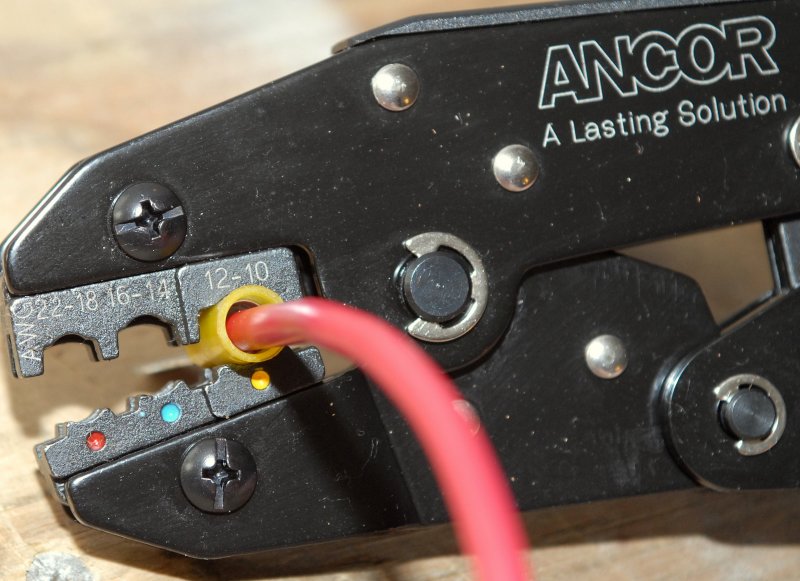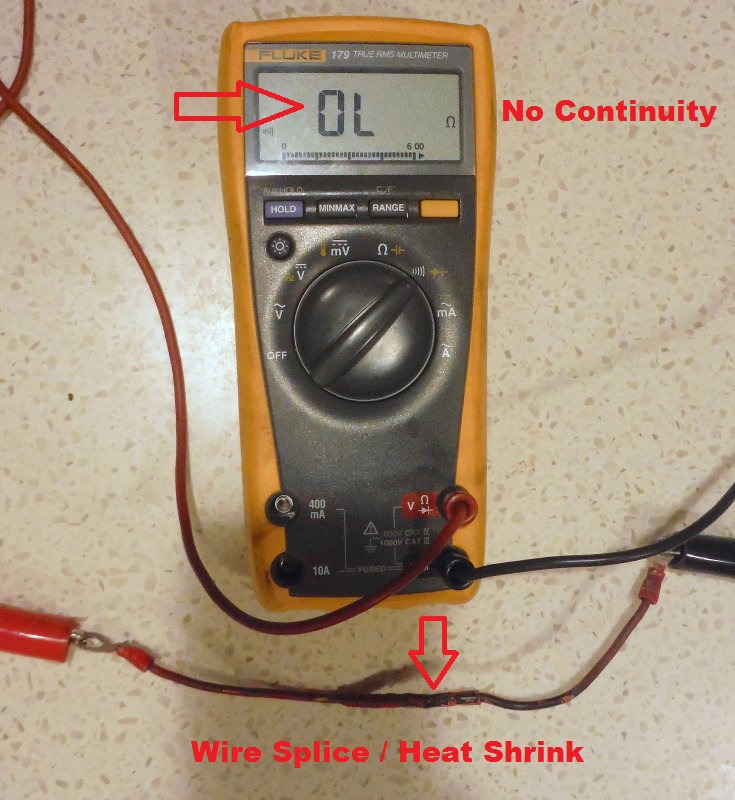I'll look at the name when I get home but I think I got it years ago from Summit Racing. It's the same one available everywhere. I remember taking a chance from the pictures in the catalog that it was the same as the MSD crimper so I bought all of the MSD jaws for it. They all fit.What ratcheting crimper did you use?
You are using an out of date browser. It may not display this or other websites correctly.
You should upgrade or use an alternative browser.
You should upgrade or use an alternative browser.
Heatshrink Butt Connectors vs Other Options
- Thread starter The Critic
- Start date
What you really want is crimps that crimp on both the wiring and the outer jacket to provide strain relief, and then cover with heat shrink. That is how ALL wiring repairs are done at BMW, and pretty much every auto dealer. Double crimp is also how all the wiring is done at the factory.


Those are just typical molex pins.What you really want is crimps that crimp on both the wiring and the outer jacket to provide strain relief, and then cover with heat shrink. That is how ALL wiring repairs are done at BMW, and pretty much every auto dealer. Double crimp is also how all the wiring is done at the factory.

Can’t really find a decent pic, but our wiring splices are crimped the same way.Those are just typical molex pins.
maybe I’m slow cutting insulation, slicing, soldering, insulating, heat shrinking, so I know I can do at least 10 crimps for one soldering. Your justification of rewiring is also shaky since I rarely have to do a rewire and would not reuse that portion that was crimped even if I could get it apart. Simply cut wire and recrimp fresh wire. Your method requires finding tools, settin up, taking apart heat shrink,unsoldering, splicing again, soldering again, heat shrinking etc. Still 10 x to redo one. As I said, to each his own and I have no need to argue this any more. OutExcept it won't be just as good, and in fact you can't do at least 10 in the same amount of time, "maybe" 3:1 in an ideal scenario (more than that and we're back to an inferior connection), but breaking down total time to do a job, you're looking at several minutes to get tools and diagnose/find, or fabricate, then this difference of 3:1 is like 15 seconds versus 45 seconds, a small % of total job time unless you are doing a massive rewiring job with quite a few connections.
If you are doing a massive rewiring job, all the more reason to solder instead so you don't later have tons of crimps to double check if something isn't working right, because you can tell right away if a solder joint didn't do (coat/flow) well but a crimp with oxidized wire, crimps the same even if the connection is electrically poor with high resistance.
Last edited:
I have this crimper. Just used it this weekend. Works great.

 www.harborfreight.com
www.harborfreight.com

Ratcheting Crimping Tool
Amazing deals on this Ratcheting Crimping Tool at Harbor Freight. Quality tools & low prices.
Good point regarding tinning wires and then soldering. Thankscrimping vs soldering arguments....
I would think I would have heard every side multiple times by now, and not click, but I cannot help it.
Here's my opinion.
Both have their time and place.
Sometimes one or the other is the better call.
Both can be done correctly, or good enough, or horribly, and there is no shortage of those who have encountered either end and feel ridiculously strongly about their opinions formed from that encounter.
One thing most might not realize, is solder, on a scale of 1 to 100, copper being 100 in terms of conductivity, is only about 15.
So tinning two wires, placeing them side by side then soldering them together, is hardly a low resistance connection, but perhaps the current so low it does not matter.
If twisting two wires together end to end, and two wires side by side, and then soldering them together, is too difficult, I usually crimp.
I dislike insulated connectors, and have bought lots of uninsulated connectors and use 1 or more layers of unequal length adhesive lined heatshrink.
If the wires will vibrate or see potential stress at the end of the crimp, or solder joint, I make sure it cannot flex right there.
Proper crimping can be taken to ridiculous levels, that some might consider just adequate.
Some's 'good enough' would be laughed right out of the cockpit by those with higher standards.
Here's two good articles on the subject:

Marine Wire Termination - Marine How To
Marine Wire Termination - Tools of the Trade MHT Recommended Tools: The products below are our top picks for crimp tools. RecommendationsI include; PRO GRADE, MARINE GRADE, & PENNY SAVER GRADE. Every tool recommended BELOW, we have tested here.marinehowto.com

Solder and Poor Trouble Shooting = $$$$ - Marine How To
The Wire That Caused Years Worth Of Expenses So I get called to winterize a new customers boat and it has already been hauled to their house and needs to be winterized on the hard. Notmarinehowto.com
Ancor makes high quality products for the boating industry. They make some double crimp connectors which are the best in my mind. But requires a special double crimper.
On cars and trailers I often use a normal Ancor connector and paint the exposed ends with liquid tape. (Color matching of course.)
On cars and trailers I often use a normal Ancor connector and paint the exposed ends with liquid tape. (Color matching of course.)
Just curious, if a wire has been properly soldered, and you cannot pull it apart with your hands. Wouldn't that be consider good enough?I once thought soldered connections are best. However, in talking to friends that run cars at the strip, it appears soldered cant take the severe vibrations under race conditions. They all use crimped connections.
^ That is good enough but what ends up happening is they didn't keep the wire from vibrating nor use sufficient heatshrink tubing so the wire flexes most right at the end of the solder wetted joint and eventually suffers fatigue. This is not a problem with "soldering" instead, rather not doing it correctly.
You can also splice and have same fatigue situation right after that rigid connection, but people are funny in how they classify what went wrong instead of focusing on details. Even with a wire that is whole, not soldered or crimped, you don't want any one segment subject to excessive flexing but when you introduce a rigid section it tends to flex that much more at one or the other (of not both) ends of that rigid connection. This is a situation where finer, higher strand count wire would be an improvement but we're just taking about using bog standard wire that's already there, I would assume...
You can also splice and have same fatigue situation right after that rigid connection, but people are funny in how they classify what went wrong instead of focusing on details. Even with a wire that is whole, not soldered or crimped, you don't want any one segment subject to excessive flexing but when you introduce a rigid section it tends to flex that much more at one or the other (of not both) ends of that rigid connection. This is a situation where finer, higher strand count wire would be an improvement but we're just taking about using bog standard wire that's already there, I would assume...
Will need to extend some 4 conductor cable. Don't want to use the insulated butt connectors because they would make the wire bundle too thick, even if I staggered the splices. Ordered these uninsulated butt crimps on Ebay, https://www.ebay.com/itm/401789388681?hash=item5d8c838789:g:yb4AAOSwUY9dCMTW and will cover with heat shrink. Does anyone make a solderable version?
Similar threads
- Replies
- 24
- Views
- 4K
- Replies
- 3
- Views
- 988
- Locked
- Replies
- 5
- Views
- 31K
- Replies
- 24
- Views
- 16K
- Replies
- 48
- Views
- 16K
